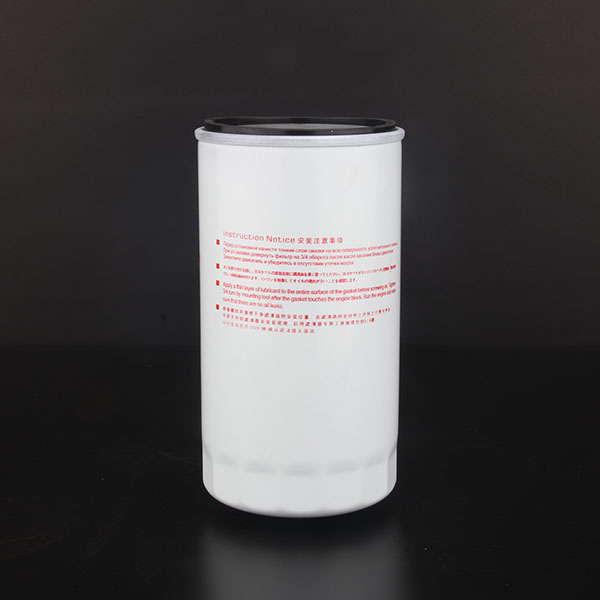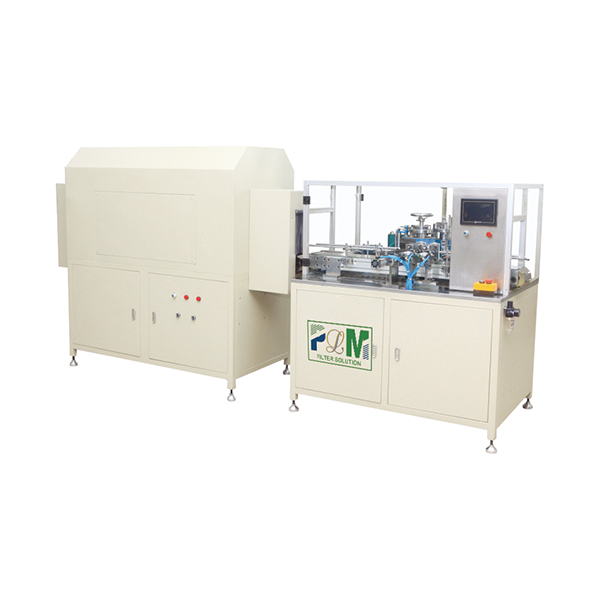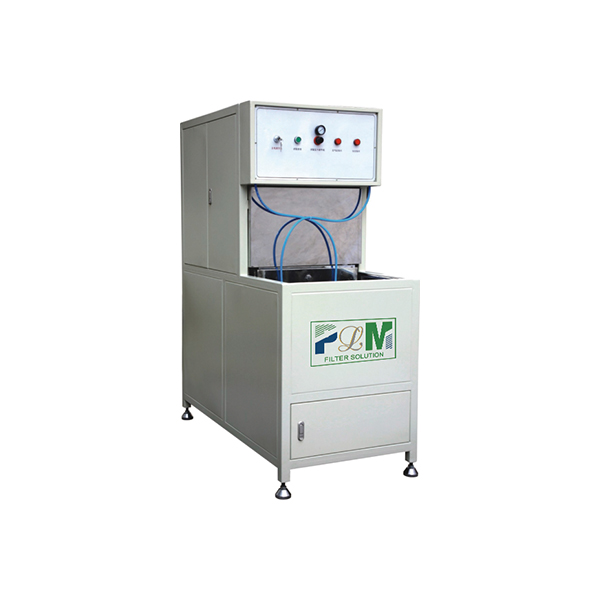Sep . 12, 2025 08:00 Back to list
Premium Active Carbon Air Filter for Air Purifier - Odor & VOC Removal
The Imperative Role of Active Carbon Air Filters in Modern Purification Systems
In an era defined by increasing environmental concerns and a heightened focus on indoor air quality (IAQ), the demand for advanced air purification technologies has never been more critical. Particulate matter, volatile organic compounds (VOCs), odors, and hazardous gases pose significant health risks in both residential and industrial settings. Within this context, the active carbon air filter for air purifier stands out as a foundational component, offering unparalleled efficacy in molecular filtration. This comprehensive analysis delves into the technical intricacies, market dynamics, and strategic applications of these essential filtration solutions, addressing the needs of B2B decision-makers and engineering professionals.
The global air purification market is projected to reach over $30 billion by 2027, driven by urbanization, industrial emissions, and growing health awareness. While HEPA filters excel at capturing particulate matter, it is the activated carbon that targets the gaseous pollutants that HEPA cannot. This dual-action approach is becoming standard for high-performance air purification systems. Furthermore, the advancements in materials science are leading to filters with enhanced adsorption capacities and longer service lives, offering superior value and operational efficiency. Related filtration needs, such as a replacement dyson carbon hepa air filter or a honeycomb activated carbon filter for specific HVAC systems, underscore the versatility and critical importance of activated carbon across various purification demands.

Figure 1: High-efficiency active carbon filtration media.
The Meticulous Manufacturing Process of Active Carbon Air Filters
The production of a high-performance active carbon air filter for air purifier is a multi-stage process, demanding precision engineering and stringent quality control at every step. This ensures optimal adsorption capacity, structural integrity, and longevity. The process typically begins with the selection of premium raw materials, predominantly coconut shells or coal, known for their high carbon content and microporous structure potential.
Process Flow Overview:
- Raw Material Sourcing & Preparation: Selection of high-grade carbonaceous materials (e.g., coconut shells, wood, coal). These are cleaned, crushed, and sieved to achieve a uniform particle size distribution, crucial for subsequent activation.
- Carbonization: The raw material undergoes pyrolysis (heating in an inert atmosphere) at temperatures typically ranging from 400-800°C. This process removes volatile organic compounds, leaving behind a carbonaceous char with a basic pore structure.
-
Activation: This is the critical step where the char's porosity is significantly enhanced.
- Steam Activation: The most common method, involving heating the carbonized material to 800-1100°C in the presence of steam. The steam reacts with the carbon, creating and enlarging pores, resulting in a high surface area.
- Chemical Activation: The material is impregnated with chemical agents (e.g., phosphoric acid, zinc chloride) before carbonization, which act as dehydrating agents and pore-forming catalysts.
- Impregnation (Optional): For specific applications, the activated carbon may be impregnated with chemicals (e.g., potassium iodide, phosphoric acid) to enhance its ability to remove specific gases like formaldehyde, ammonia, or acid gases. This creates specialized media, often seen in high-demand environments.
- Granulation/Extrusion/Pelletization: The activated carbon is processed into various forms – granular, extruded pellets, or powdered – depending on the filter design and application requirements. Honeycomb activated carbon filter designs often utilize extruded pellets for their structural integrity and optimal airflow.
- Filter Media Fabrication: The activated carbon granules or pellets are integrated into filter cartridges. This can involve embedding them within fibrous media, creating carbon beds, or forming pleated structures. Techniques often involve CNC machining for frame precision and ultrasonic welding for secure assembly.
- Assembly & Sealing: The carbon media is enclosed within a robust frame, typically made from high-grade plastics or galvanized steel, ensuring a tight seal to prevent bypass leakage. Gaskets are often incorporated using advanced robotic sealing techniques.
- Quality Control & Testing: Each filter undergoes rigorous testing to meet industry standards such as ISO 9001 for quality management, ANSI/ASHRAE 52.2 for filtration performance, and potentially EN 1822 for HEPA components if it's a combined filter. Tests include pressure drop, airflow resistance, and adsorption efficiency (e.g., CTC adsorption, iodine number).
Target industries benefiting from these rigorously manufactured filters include petrochemical, metallurgy, semiconductor fabrication, and various water supply & drainage applications where air purity is paramount. The inherent corrosion resistance of modern filter materials, coupled with optimized design, contributes to significant energy saving by minimizing pressure drop, even over an extended service life of 6-12 months for standard applications, and up to 24 months for specialized installations with lower contaminant loads. While focusing on air filtration, it's worth noting the parallel importance of filters like the fuel filter for caterpillar truck engine or the 37010 - auto car engine oil filter in ensuring the longevity and efficiency of heavy machinery in these same industrial sectors.

Figure 2: Advanced manufacturing line for air purification components.
Technical Specifications and Performance Metrics
Understanding the precise technical parameters of an active carbon air filter for air purifier is crucial for system integration and performance optimization. The efficacy of these filters is quantified by several key metrics that indicate their adsorption capabilities, airflow characteristics, and overall lifespan.
Typical Product Specification Table: Granular Activated Carbon Filter
| Parameter | Description | Typical Value/Range |
|---|---|---|
| Carbon Type | Coconut Shell / Coal-Based | High Purity, Virgin Carbon |
| Iodine Number | Measure of Micropore Content (adsorption capacity) | 950 - 1200 mg/g |
| CTC Adsorption | Carbon Tetrachloride Adsorption (indicator of VOC removal) | 50% - 70% (by weight) |
| Ash Content | Inorganic Residue after Combustion | Max 5% |
| Hardness No. | Resistance to Attrition (prevents dust generation) | Min 95% |
| Apparent Density | Bulk Density of Activated Carbon | 450 - 550 kg/m³ |
| Bed Depth | Thickness of Carbon Layer in Filter | 25mm - 100mm (Application Dependent) |
| Airflow Resistance | Initial Pressure Drop at Rated Airflow | < 100 Pa at 0.5 m/s |
| Operating Temperature | Optimal Performance Temperature Range | -20°C to 50°C |
These specifications ensure that the filter media provides excellent adsorption capabilities against a wide range of gaseous pollutants, including VOCs, odors, and certain hazardous chemicals, while maintaining a low pressure drop to minimize energy consumption for the air handling unit. For industrial applications requiring robust filtration, akin to an isf2 8 oil-water separator fuel filter, the durability and consistent performance of the carbon media are paramount.

Figure 3: Detailed view of activated carbon granules within a filter matrix.
Diverse Application Scenarios and Technical Advantages
The versatility of an active carbon air filter for air purifier makes it indispensable across a multitude of sectors, from improving indoor air quality in commercial buildings to safeguarding sensitive industrial processes. Its technical advantages stem from the unique adsorption properties of activated carbon, offering a broad spectrum of pollutant removal capabilities.
Key Application Scenarios:
- Commercial & Residential HVAC Systems: Essential for removing common indoor air pollutants such as cooking odors, pet odors, tobacco smoke, and VOCs from cleaning products, paints, and furnishings. Enhances occupant comfort and health.
- Hospitals & Healthcare Facilities: Critical for mitigating odors from medical procedures, pharmaceuticals, and biological agents, as well as removing airborne disinfectants and chemical fumes, ensuring a healthier environment for patients and staff.
- Laboratories & Cleanrooms: Protects sensitive equipment and experiments from gaseous contaminants that could compromise results. In environments requiring ultra-high purity, such as semiconductor manufacturing, multi-stage filtration including activated carbon is standard practice.
- Museums & Archives: Prevents degradation of valuable artifacts and documents by removing acidic gases (e.g., SO2, NOx) and other airborne pollutants that accelerate material decay.
- Industrial Process Air Filtration: Used in chemical processing plants, wastewater treatment facilities, and manufacturing sites to control offensive odors and remove specific toxic gases, protecting both personnel and the surrounding community. This mirrors the need for specific filtration solutions like a rts aliexpress way compressed air filter to protect pneumatic systems from moisture and particulates.
Technical Advantages:
- Broad-Spectrum Adsorption: Activated carbon effectively adsorbs a wide range of organic and some inorganic gases, including VOCs, formaldehyde, ammonia, and hydrogen sulfide, which HEPA filters cannot capture.
- High Adsorption Capacity & Surface Area: With internal surface areas typically exceeding 1000 m²/g, activated carbon provides an immense number of sites for molecular capture, leading to high contaminant loading.
- Odor Neutralization: Unparalleled in its ability to eliminate offensive odors rather than just masking them, creating fresher and healthier indoor environments.
- Durability & Stability: Properly manufactured activated carbon maintains its structural integrity and adsorption properties over extended periods, even under varying environmental conditions.
- Energy Efficiency: Modern designs, particularly those with optimized bed depths and flow patterns, minimize pressure drop across the filter, reducing the energy consumption of HVAC systems. This contrasts with more restrictive filters, though an efficient merv 8 pleated ac furnace air filter also prioritizes low pressure drop.
- Chemical Impregnation for Specific Threats: The ability to impregnate activated carbon with specific chemicals allows for targeted removal of challenging gases (e.g., acid gases, mercury vapor), enhancing its functional versatility.

Figure 4: Illustration of multi-stage air purification system including carbon filtration.
Vendor Comparison and Customized Solutions
Selecting the right provider for an active carbon air filter for air purifier requires careful consideration of several factors, including product quality, customization capabilities, and post-sales support. A strategic partnership with a reliable vendor ensures optimal system performance and longevity.
Vendor Comparison Table: Key Criteria
| Criterion | Vendor A (Standard) | Vendor B (Specialized) | MFilter Solution (Custom Focus) |
|---|---|---|---|
| Carbon Source & Quality | Coal-based, general purpose | Coconut shell, high iodine # | Virgin Coconut Shell/Specialty Impregnated |
| CTC Adsorption (%) | 50-60% | 60-70% | 70%+, tailored for specific VOCs |
| Frame Material Options | Cardboard, basic plastic | Galvanized steel, ABS plastic | Galvanized Steel, Stainless Steel, ABS, Custom Engineered Plastics |
| Custom Sizes/Designs | Limited standard sizes | Some flexibility | Full customization, OEM/ODM capabilities |
| Certifications | ISO 9001 | ISO 9001, ASHRAE 52.2 | ISO 9001, ASHRAE 52.2, RoHS, CE, TUV Rheinland |
| Technical Support | Basic support | Experienced team | Dedicated engineering consultation, 24/7 service |
Customized Solutions: Tailoring Filtration to Specific Needs
Recognizing that no two applications are identical, MFilter Solution specializes in providing bespoke filtration solutions. Our customized offerings extend beyond standard dimensions to include:
- Specialized Carbon Media: Impregnated carbon for enhanced removal of specific contaminants like hydrogen sulfide (H2S), sulfur dioxide (SO2), ammonia (NH3), or mercury.
- Custom Dimensions & Configurations: Filters engineered to precise geometric requirements for seamless integration into existing air handling units or new OEM designs. This includes specialized housings and panel filters.
- Multi-Stage Filtration Integration: Combining activated carbon with other media, such as HEPA or pre-filters (e.g., a merv 8 pleated ac furnace air filter for particulate removal), into a single unit to achieve optimal overall air quality.
- Frame Material Selection: Options for corrosion-resistant materials like stainless steel for harsh industrial environments, or fire-retardant plastics for safety-critical applications.
- Optimized Bed Depth & Density: Adjusting the carbon bed parameters to balance adsorption capacity with airflow resistance, ensuring peak performance for the specific contaminant load and system pressure constraints. This approach is similar to how a precise oil filter fit for outback legacy svx car or a fuel filter for 6.7l diesel fd4615 is engineered for specific engine performance.
Application Case Studies and Customer Feedback
Real-world application demonstrates the tangible benefits of our active carbon air filter for air purifier solutions. Our extensive experience, backed by years of service and partnerships with industry leaders, underscores our authoritativeness in the field.
Case Study 1: Pharmaceutical Cleanroom Upgrade
A leading pharmaceutical manufacturer required a significant upgrade to their cleanroom HVAC system to eliminate trace organic solvent vapors, which posed a risk to product purity and employee health. Standard HEPA filters were insufficient for gaseous contaminants. We designed and supplied custom-sized activated carbon panel filters with chemically impregnated carbon, specifically formulated to target a range of polar and non-polar organic solvents. Post-installation air quality monitoring showed a >99% reduction in targeted VOCs, meeting stringent FDA validation requirements. The client reported enhanced operational safety and compliance, attributing it to the specialized carbon filtration.
Case Study 2: Commercial Office Building Odor Control
A modern commercial office complex in a dense urban area experienced persistent issues with incoming traffic fumes, cooking odors from adjacent restaurants, and internal VOC emissions from new furnishings, leading to tenant complaints. Our solution involved integrating high-capacity honeycomb activated carbon filter arrays into their existing air handling units. These filters were designed for maximum carbon loading and minimal pressure drop. Within weeks, tenant satisfaction surveys showed a dramatic improvement in perceived air freshness, and objective measurements confirmed a significant reduction in key odor-causing compounds and airborne aldehydes. The project showcased the effectiveness of properly sized and configured carbon filters in improving indoor environmental quality.
Customer feedback consistently highlights our commitment to product reliability and technical support. Many clients commend the extended service life of our filters, contributing to reduced maintenance cycles and operational costs. Our adherence to certifications like ISO 9001 and CE marking ensures consistent quality and performance across all product lines, from advanced air filters to industrial solutions like an isf2 8 oil-water separator fuel filter.

Figure 5: Professional consultation for custom filtration solutions.
Trust & Transparency: FAQs, Logistics, and Support
Frequently Asked Questions (FAQs):
- Q: How often should an active carbon air filter for air purifier be replaced?
- A: Replacement frequency depends on usage intensity, air quality, and the specific contaminants being removed. Typically, for continuous use in average indoor environments, replacement every 6-12 months is recommended. In high-pollutant environments, it may be sooner, while in cleaner settings, it could extend to 18-24 months. Monitoring airflow and odor presence can indicate saturation.
- Q: Can activated carbon filters remove viruses and bacteria?
- A: Activated carbon filters are primarily designed for gaseous contaminants (VOCs, odors). They do not effectively filter airborne viruses and bacteria, which are particulate matter. For microbial removal, a HEPA filter (often combined with carbon) is required, or specialized UV-C light purification systems. Our combined carbon-HEPA filters offer both particulate and gaseous filtration.
- Q: What is the difference between physical adsorption and chemisorption?
- A: Physical adsorption (physisorption) involves weak intermolecular forces (van der Waals forces) between the gas molecule and the carbon surface, a reversible process. Chemisorption, on the other hand, involves a chemical bond forming between the adsorbate and the adsorbent, typically occurring with chemically impregnated carbon, making it highly specific and often irreversible, thus more effective for certain toxic gases.
Lead Time & Fulfillment:
Our standard lead time for stock items is typically 3-5 business days. For customized orders, lead times range from 2-4 weeks, depending on complexity, material sourcing, and order volume. We maintain robust supply chain logistics to ensure timely delivery and offer expedited shipping options for urgent requirements. Our global distribution network supports efficient fulfillment for international clients.
Warranty Commitments:
All MFilter Solution products, including our advanced active carbon air filters, come with a comprehensive warranty against manufacturing defects and material failures. Our standard warranty period is 12 months from the date of purchase, reflecting our confidence in product quality and durability. Specific warranty terms for custom solutions are detailed in project contracts. We stand by our products and ensure they meet the highest standards, similar to the reliability expected from a premium fuel filter for 6.7l diesel fd4615.
Customer Support & After-Sales Service:
MFilter Solution is committed to providing unparalleled customer support. Our dedicated technical team is available for consultation, installation guidance, troubleshooting, and ongoing performance optimization. We offer comprehensive after-sales service, including remote support, on-site assistance for complex systems, and training for your operational staff. Your satisfaction and continued operational excellence are our top priorities.
Conclusion and Authoritative References
The selection and deployment of an advanced active carbon air filter for air purifier are critical decisions for any B2B entity prioritizing superior indoor air quality, operational efficiency, and regulatory compliance. MFilter Solution offers a robust portfolio of standard and custom-engineered filtration solutions, characterized by advanced technical specifications, stringent quality control, and dedicated customer support. Our commitment to innovation, backed by deep industry expertise and a proven track record, ensures that our partners receive the most effective and reliable air purification technologies available.
For further inquiries or to discuss tailored filtration strategies, please contact our expert team. We are dedicated to delivering filtration excellence across diverse industrial and commercial applications.
Authoritative References:
- American Society of Heating, Refrigerating and Air-Conditioning Engineers (ASHRAE). (2020). ASHRAE Standard 52.2-2017: Method of Testing General Ventilation Air-Cleaning Devices for Removal Efficiency by Particle Size.
- International Organization for Standardization (ISO). (2015). ISO 9001:2015: Quality management systems – Requirements.
- United States Environmental Protection Agency (EPA). (2023). Indoor Air Quality (IAQ). Retrieved from www.epa.gov/indoor-air-quality-iaq
- European Standard (EN). (2018). EN 1822-1:2019 High efficiency air filters (EPA, HEPA and ULPA) – Part 1: Classification, performance testing, marking.
- Mohan, D., & Pittman, C. U. (2006). Activated Carbon and Low-Cost Adsorbents for Remediation of Water/Wastewater Contaminants. Journal of Hazardous Materials, 137(1), 762-811.
Comprehensive Guide to Filter Caps: Applications, Benefits & Future Trends
NewsNov.24,2025Filter Paper: Essential Guide for Industry and Global Applications
NewsNov.23,2025Essential Guide to Filter Materials: Types, Applications, and Future Trends
NewsNov.22,2025Efficient Long Pulse Dust Collector Pleated Filters for Superior Industrial Air Quality
NewsNov.22,2025Professional Air Filter Making Machine – Efficient Air Filtration Production Solutions
NewsNov.21,2025PLAB-6 A/B Glue System-Hebei Filter Man|Precision&Adjustable Speed
NewsNov.21,2025






